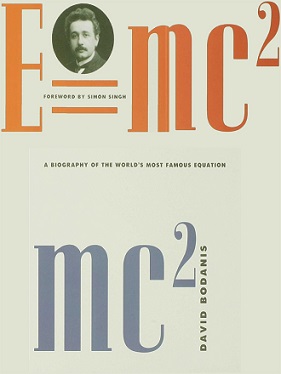|
home | what's new | other sites | contact | about |
||
|
Word Gems exploring self-realization, sacred personhood, and full humanity
Einstein
return to "Einstein" main-page
David Bodanis' excellent book, E=mc2
M is for mass. Mass is a measure of the amount of matter in an object. Mass is different than weight. Weight is a measure of gravitational pull. If you were on the Moon, you’d weigh only one-sixth of your normal weight on Earth, though your mass would remain the same. It was once thought that the various objects in the world – a block of ice, a boulder of granite, a hummingbird’s wing, an apple – were all separate, with no connection among the diverse lot. However, in the latter 1700s, the Frenchman Antoine Lavoisier, one of the world’s earliest and greatest chemists, began to solve this mystery. He worked for the King as a tax-collector, but in his free time he investigated the mysteries of the fledgling-world of science. Lavoisier, with a spirit of accounting exactness honed by his tax work, would weigh various materials. For example, he weighed, before and after, a rusting piece of metal.
To his surprise, he discovered that the rusted metal weighed more than it did in pristine state. He reasoned that part of the air had mixed with the metal. This hypothesis was confirmed by painstakingly weighing the air, before and after. Slowly, Lavoisier began to perceive that matter might change form, but it is not destroyed. It just appears somewhere else, in a different guise. atoms are not miniature solar-systems It was once thought that matter was composed of “hard little bee-bees,” solid subatomic particles, like tiny billiard balls. Instead, quantum physicists have discovered that matter is not “hard edged” after all, but, at the level of the very small, matter is a wave vibration. In fact, the more we subdivide matter, the more it disappears into a nothingness. See a collection of quotes from the great quantum physicists. Hans Peter Durr: Whatever it's made of, "matter is not made of matter." Einstein changed our view of mass. It’s not constant. Recall his famous thought-experiment: If you’re on a bicycle, going faster and faster, could you catch up to a light-beam? He finally realized that you could never catch up to the beam. Light would always race ahead of you at 186,000 mps. But, it would take a lot of energy to keep going faster and faster. And if we could never actually catch the light-beam, where is all that expended energy going to? The answer is, the increasing energy is being converted into mass. That bicycle you’re riding, as it goes faster and faster, is growing and growing in mass.
|
||
|
|

